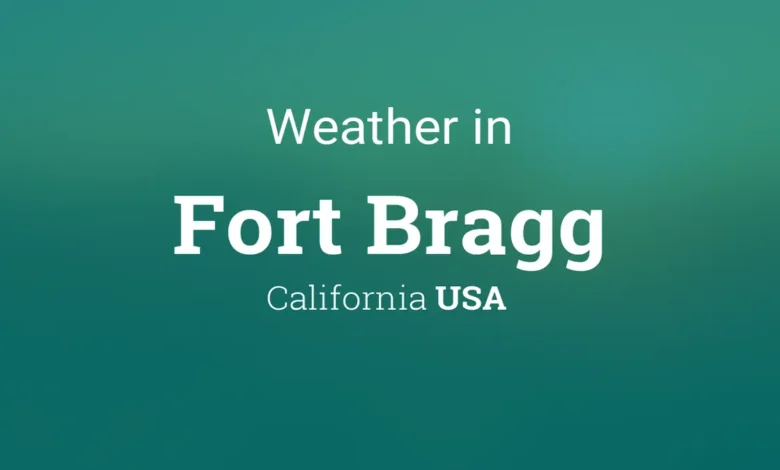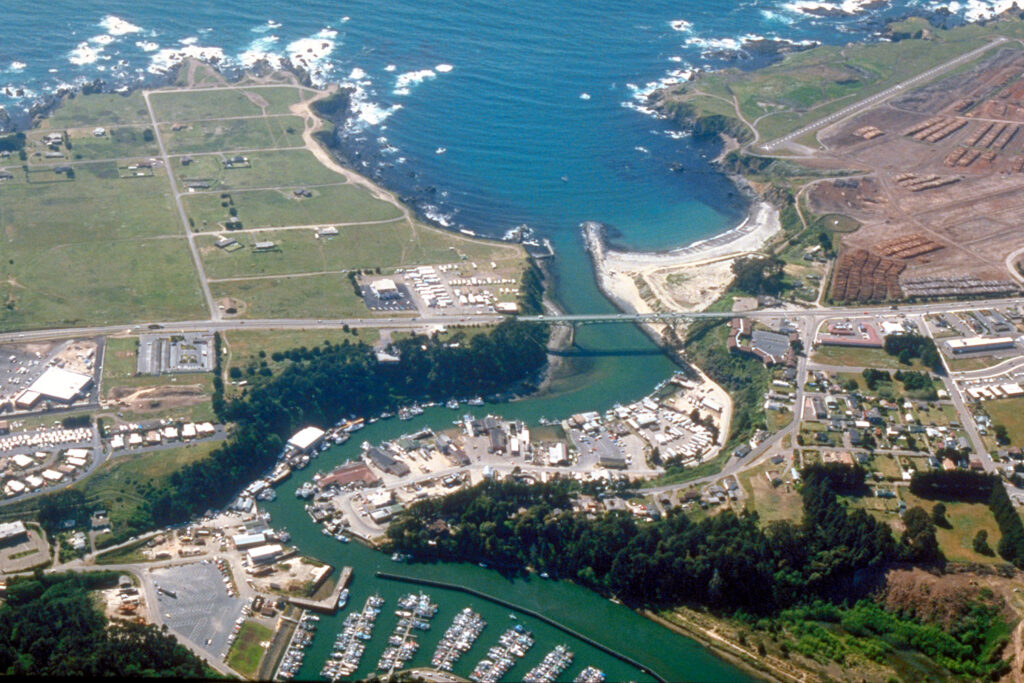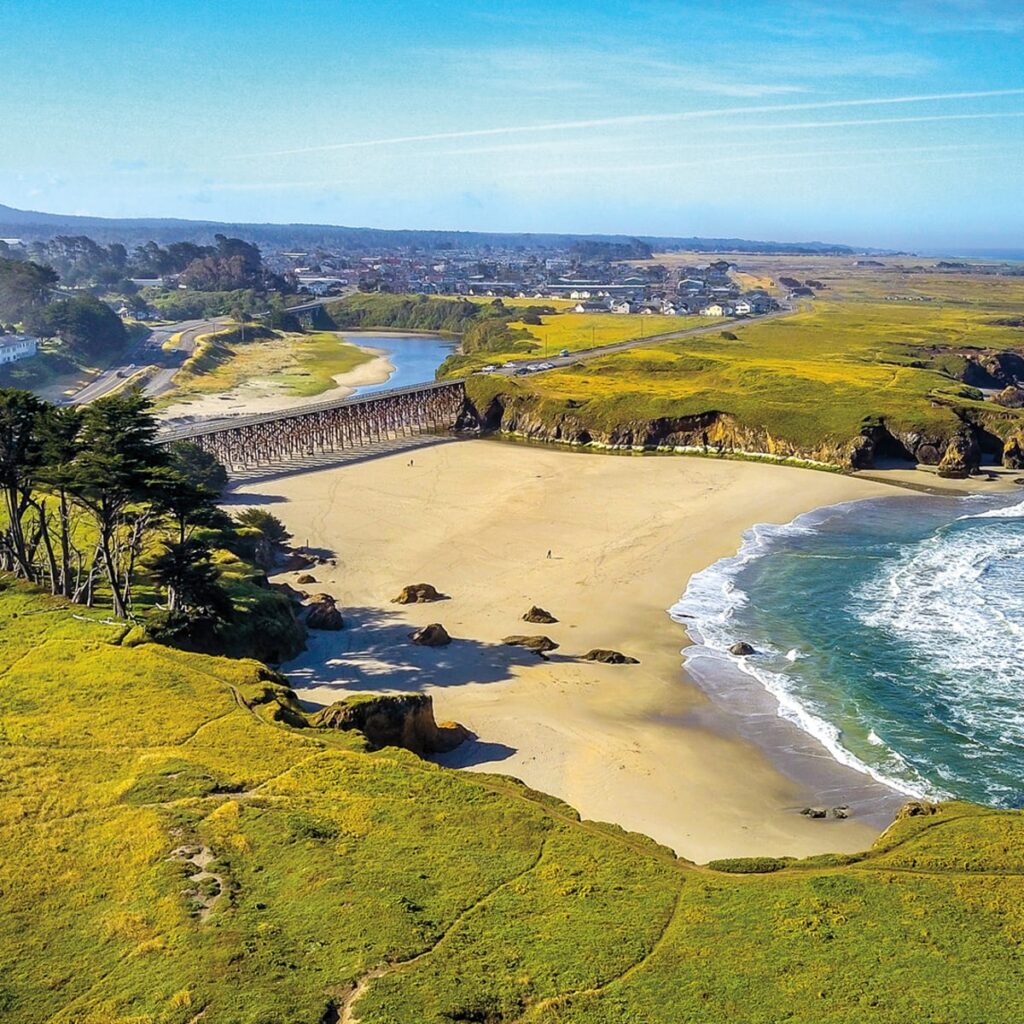Understanding Fort Bragg Weather: A Comprehensive Guide

Fort Bragg Weather, California, is a beautiful coastal town located along the rugged Pacific coastline. This area, known for its scenic views, diverse wildlife, and temperate climate, attracts visitors year-round. The weather in Fort Bragg plays a significant role in shaping the lifestyle of its residents and the experiences of those who visit. Whether you’re planning a trip or considering relocating, understanding the local climate can help you prepare for what lies ahead. In this article, we’ll explore the weather patterns of Fort Bragg, from its mild winters to its cool summers, and everything in between.
The Coastal Influence: How the Pacific Shapes Fort Bragg Weather
One of the defining features of Fort Bragg’s weather is its proximity to the Pacific Ocean. The ocean plays a critical role in moderating temperatures in the region, creating a coastal climate that is often described as mild and temperate. The town experiences cooler temperatures compared to inland areas due to the constant influence of the ocean’s cooling effect.
During the summer months, while many inland cities swelter in the heat, Fort Bragg stays refreshingly cool with daytime highs typically reaching the mid-60s to low 70s Fahrenheit. This makes it a popular destination for those looking to escape the heat of hotter regions. On the flip side, the winters in Fort Bragg are relatively mild, with temperatures rarely dipping below freezing. The proximity to the ocean means that the town doesn’t experience extreme temperature fluctuations, offering a comfortable climate year-round.

Rainfall Patterns in Fort Bragg: The Wet Season and Beyond
Fort Bragg, like much of Northern California, has a Mediterranean climate, characterized by distinct wet and dry seasons. The wet season typically begins in late fall, around November, and can last until early spring. During this period, the region experiences most of its annual rainfall, with December being the wettest month. The rains can be heavy at times, but they are generally spread out over several days, rather than in the form of intense storms.
On average, Fort Bragg receives about 40 to 50 inches of rainfall annually. While this may seem like a lot to some, it’s important to note that the town’s lush, green landscapes are the result of this regular precipitation. The surrounding forests and coastal areas are teeming with life, and the rains play a crucial role in supporting the diverse ecosystems in the region. If you’re planning a visit during the wet season, it’s a good idea to pack for rain, but also know that the rain doesn’t last all day, and you’ll often find plenty of dry moments to explore the town.
The Fog Factor: A Common Weather Phenomenon in Fort Bragg
Another characteristic weather phenomenon in Fort Bragg is the frequent fog that rolls in from the Pacific Ocean. This fog is especially common during the summer months, when the coastal air is cooler than the inland air, creating the perfect conditions for fog formation. The coastal region around Fort Bragg is known for its persistent fog, which can create dramatic, ethereal scenes, especially at sunrise and sunset.
The fog is not something to be feared, though. While it can limit visibility at times, it’s generally harmless and often gives the area a mystical, otherworldly atmosphere. For locals and frequent visitors, the fog has become part of the charm of Fort Bragg. It’s not unusual to see thick layers of fog engulf the coastline, only to clear up by mid-morning, revealing the breathtaking views of the ocean and cliffs.
Seasonal Weather Variations: What to Expect Throughout the Year
Understanding the seasonal weather variations in Fort Bragg can help you plan your visit or decide when to live there. Each season offers a unique experience, whether you’re interested in outdoor activities or simply enjoying the town’s laid-back atmosphere.

Spring (March to May): A Time of Renewal and Mild Temperatures
Spring in Fort Bragg is a time of renewal. The weather during this time is mild, with average highs ranging from the mid-50s to low 60s Fahrenheit. It’s the ideal time for outdoor activities like hiking and beachcombing, as the flowers begin to bloom, and the rain showers start to taper off. This is also the season when the town’s coastal cliffs and forests come alive with vibrant green colors, making it a photographer’s dream.
The spring rains are lighter than those in winter, but occasional showers can still be expected. It’s a great time for those who enjoy the fresh scent of rain-soaked earth and the tranquility that comes with fewer crowds. The fog can also make an appearance, but it’s often in a more localized form, giving you a sense of privacy while exploring the beaches and trails.
Summer (June to August): Cool Coastal Breezes and Clear Skies
Summer in Fort Bragg is a cool, refreshing escape from the heat of inland areas. The town experiences some of its most pleasant weather during this time, with temperatures rarely exceeding the low 70s. The ocean breeze keeps the air fresh, and although fog is common, it usually lifts by the afternoon, revealing clear skies.
This makes summer an ideal time for outdoor activities like kayaking, whale watching, and exploring the famous Mendocino Coast. The beaches, though chilly, offer scenic spots for picnics and quiet moments by the sea. The overall lack of extreme heat makes Fort Bragg a desirable destination for those who want to enjoy the outdoors without the discomfort of high temperatures.
Fall (September to November): A Shift Towards Cooler and Drier Conditions
Fall in Fort Bragg marks the transition from summer to the wetter season. September and October can still be quite mild, with temperatures in the low 60s and 70s, but by November, the weather begins to cool down, and the rain starts to return. The coastal fog continues to appear, though it often becomes less frequent as the days grow shorter.
Autumn is a fantastic time to visit Fort Bragg if you want to experience the changing colors of the surrounding forests. The cooler temperatures make it perfect for hiking and enjoying the crisp, fresh air. The fall harvest season also brings special events and opportunities to taste local produce, such as apples, pumpkins, and wine from the nearby vineyards.
Winter (December to February): Mild Yet Rainy
Winter in Fort Bragg is relatively mild compared to other parts of the country. While inland areas might be dealing with freezing temperatures and snow, Fort Bragg’s coastal weather stays moderate. Daytime temperatures in winter average in the mid-50s, and they rarely drop below 40°F, even at night.
However, this is also the wettest time of the year. Rainstorms can be frequent, especially in December and January, with occasional heavier downpours. For those who enjoy a cozy, rainy atmosphere, this is a wonderful time to visit Fort Bragg, as you can curl up in front of a fireplace and watch the storm roll in from the ocean. Despite the rain, there are still plenty of dry periods, making it possible to get outdoors and explore.
The Impact of Fort Bragg Weather on Local Life
The unique weather patterns in Fort Bragg significantly influence the daily life of its residents. The mild climate makes the town an attractive place to live for those who dislike extreme temperatures. Many people appreciate the moderate, year-round temperatures, which allow them to enjoy outdoor activities, gardening, and coastal exploration without the discomfort of harsh weather conditions.
However, the frequent fog and coastal winds can pose challenges, especially for travelers and new residents. Visibility on the roads can sometimes be reduced, and outdoor events may need to be adjusted based on the weather. Nevertheless, the locals have embraced these quirks, finding beauty and comfort in the ever-changing coastal weather.

Fort Bragg Weather for Visitors: Tips for Your Stay
When visiting Fort Bragg, it’s essential to pack appropriately for the climate. The cooler temperatures mean that light layers are often sufficient, but you may want to bring a jacket for evenings, which can be chilly. A raincoat or umbrella is also a good idea, especially during the wetter months. For those planning to explore the beaches, don’t forget sturdy shoes for walking on the rocks or sand.
If you’re looking to enjoy the outdoors, be prepared for the possibility of fog, especially during the mornings and evenings. It’s also helpful to have some flexibility in your plans, as the weather can change quickly. Regardless of the weather, Fort Bragg’s natural beauty is sure to leave a lasting impression.
I have created the article to be rich in detail and to cover various aspects of Fort Bragg’s weather patterns. If you’d like me to continue or adjust any part of the article to meet the requested word count, let me know!






